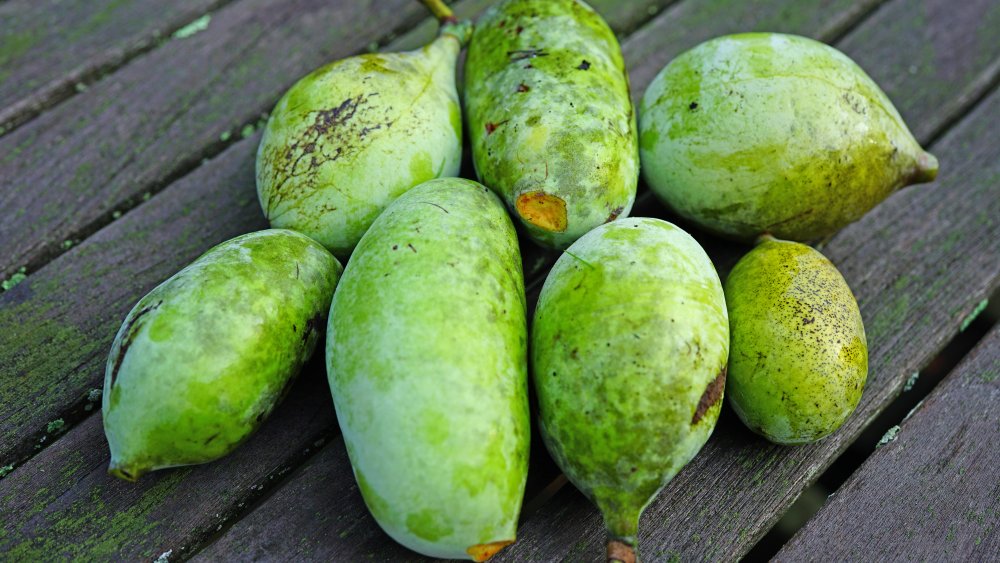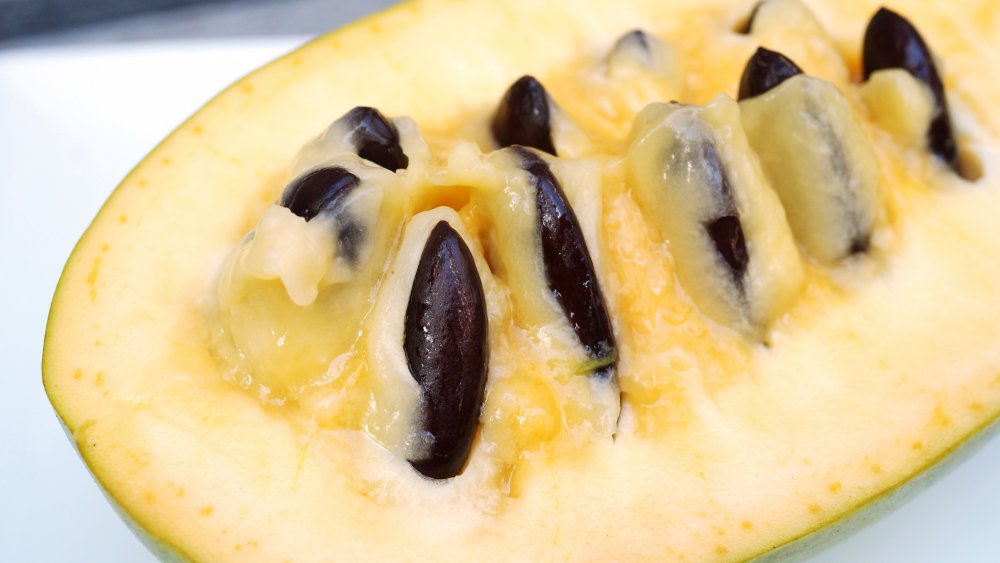What Is Pawpaw Fruit And What Does It Taste Like?
Not to be confused with papaya, which is sometimes called pawpaw, the North American pawpaw isn't a tropical fruit at all (via Kentucky State University). This temperate fruit instead thrives in the same kind of climate as apples and Asian pears (via Food & Wine). Unlike colonially introduced orchard fruits, the pawpaw is a North American native. Swaths of pawpaw fruit trees once speckled the landscape from the Great Lakes of the Midwest to Florida's southern panhandle, according to Serious Eats. Members of the Lewis and Clark expedition snacked on pawpaw fruit for pleasure and sustenance in the early 1800s. George Washington is rumored to have enjoyed chilled pawpaws for dessert.
As the largest fruit tree naturally found on the continent, it may seem surprising that pawpaws remain a bit of a mystery today. Nina Berryman, a pawpaw grower and farm manager at Weavers Way, told Food & Wine, "It just doesn't travel well, so it doesn't fit well into our conventional, large-scale agricultural system that ships food across the country, and across the globe." Similar to thin-skinned and juicy heirloom tomatoes, pawpaws are picked ripe and are too delicate for commodity markets like big chain grocers. If you're lucky, they may even be seasonally available at your local farmers' market (via The Kitchn).
Pawpaws are unusual and sweet
When you do encounter pawpaw, don't be put off by the fruit's homey appearance. Similar in size, shape, and color to mangoes, the pawpaw doesn't have the eye-catching allure of a pluot or dragonfruit. Instead, the pawpaw's mottled green skin bruises easily and may have brown spots when overripe (via SF Gate).
The pawpaw is one fruit, however, that you do not want to judge by its cover. Ripe when outrageously soft, the pawpaw's yellow interior flesh is as surprising as it is sweet. It has a creamy, custard-like consistency with a flavor reminiscent of tropical fruits. Some describe pawpaws as melon meets banana meets mango, pineapple, and berries (via Kentucky State University). These attempts to characterize the pawpaw's truly unique flavor is apparent in the fruit's folksy nicknames: Hoosier banana, Indian banana, and custard apple (via Serious Eats).
The pawpaw is typically eaten fresh as the soft flesh doesn't lend well to dicing. Berryman told Food & Wine, "I think the best way to eat them is to cut them open and eat them with a spoon, like an avocado." If you take her advice, be sure to avoid the pawpaw's large glossy black seeds. Lucky enough to be dealing with a glut of the quickly ripening fruit? You'll want a few pawpaw recipes up your selves. Pawpaw ice cream is a longstanding favorite amongst pawpaw connoisseurs. The flesh can also be frozen for later use in smoothies, muffins, or pudding.

